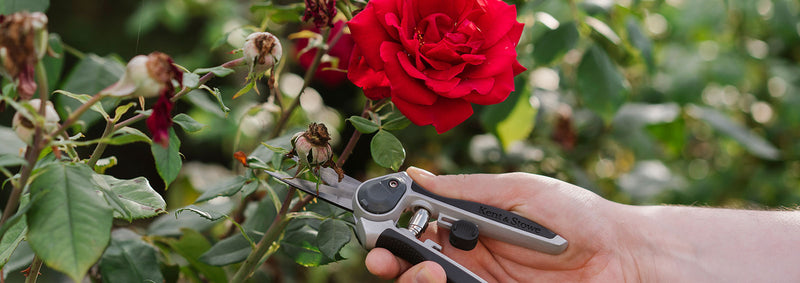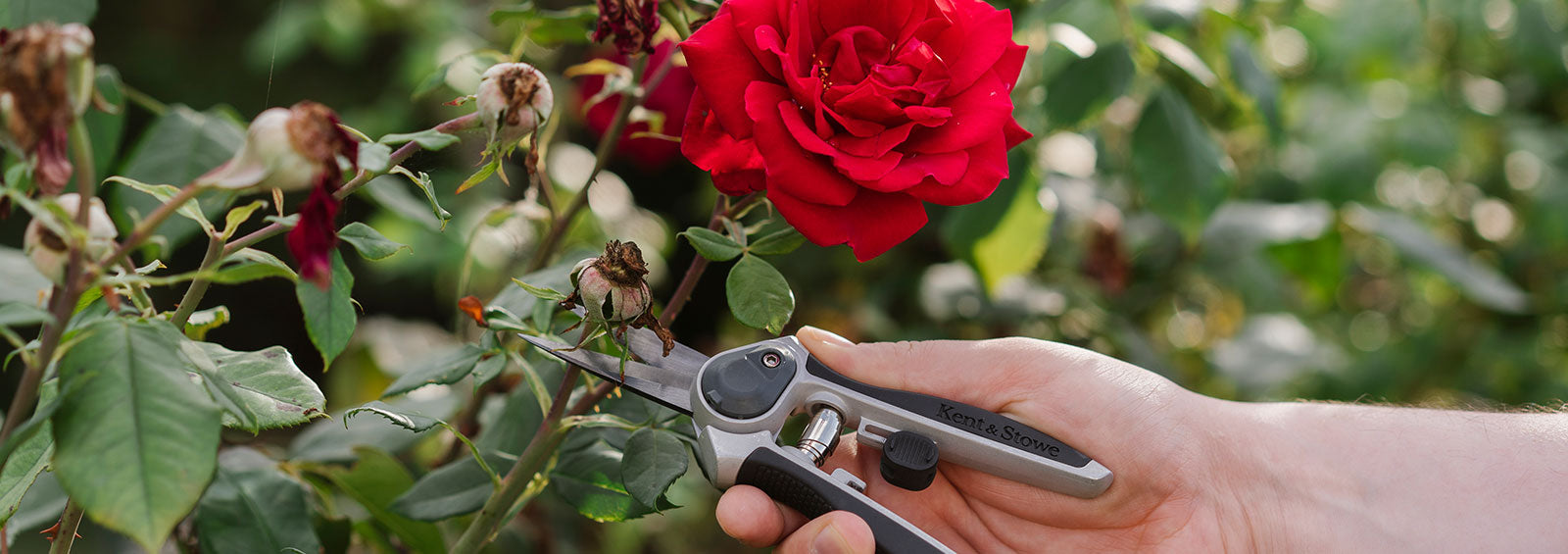March marks the beginning of spring, bringing longer days and rising temperatures. It’s the perfect time to get your garden in shape for the months ahead. With new growth emerging, now is the time to prepare, plant, and maintain your garden for a thriving season. Here are the essential gardening tasks for March.
Prepare your Garden for Spring
Tidy Garden Borders
March is the perfect time to get your garden in shape for the growing season. Start by tidying up borders and beds, removing weeds, dead leaves, and debris to make space for new growth. Use an Oscillating Hoe to remove weeds from borders, as the sharp-edged blade will easily sever weeds from underneath the soil surface. A Border Shrub Rake is a great tool for precise raking around shrubs, plants, and other delicate areas. Its narrow tines have been designed to be gentle around your plants, while removing debris, leaves and other unwanted materials.

Mulch Borders
Apply a layer of mulch to help retain moisture, suppress weeds, and enrich the soil with nutrients. Organic mulches such as compost, well-rotted manure, bark, or leaf mould are excellent choices, providing both nourishment and protection for your garden throughout the season.
Feed the Lawn
Rake away moss and dead grass with a Scarifying Rake to give your lawn some attention. Scarification is an effective method for clearing lawns of excess organic material, such as moss and thatch. Thatch is the layer of dead grass and moss that accumulates over time, and if it exceeds 1cm in thickness, it can block water and essential nutrients from reaching the grass roots. Removing this buildup through scarification enhances airflow, allowing the lawn to breathe and promoting healthier, more vigorous growth.
You can then start feeding it with a good fertiliser like Westland SafeLawn to encourage strong, healthy growth.

Clean Patios
Finally, refresh your outdoor space by using an outdoor cleaner on patios, furniture, pots, and garden toys, ensuring everything is ready for you to enjoy as the weather warms up. A thorough clean will not only enhance the appearance of your garden but also help protect surfaces from damage and make them safer by reducing slippery areas. Taking the time to refresh these spaces now ensures everything is fresh, inviting, and ready for you to enjoy as the weather warms up.
Planting & Sowing
March is the perfect time to start sowing early vegetables, getting a head start on a productive growing season. Hardy crops such as carrots, beetroot, lettuce, and spinach can be sown directly into prepared soil. Using a Kent & Stowe Hand Trowel or Hand Fork, loosen the earth and remove any weeds to create the ideal seedbed. Use a dibber to create neat and consistent holes at precise planting depths. Once sown, gently cover the seeds with soil and water well to encourage strong germination.
March is also a good time to sow tomatoes, peppers, and cucumbers indoors for transplanting later in spring. Find out more on what seeds you can sow in March.
For those looking to add a splash of colour to their garden, planting hardy annuals like pansies and primroses is a great choice. These resilient flowers thrive in cooler conditions and bring vibrant early-season blooms to beds, borders, and containers. Use a Kent & Stowe Transplanting Trowel to dig planting holes with ease, ensuring each flower has enough space to establish itself. Adding a layer of mulch around the plants will help retain moisture and suppress weeds, keeping your garden looking its best.

Pruning
March is the ideal time to give your garden a tidy-up by pruning roses and trimming winter-flowering shrubs. Cut back hybrid tea and floribunda roses to encourage strong, healthy growth and an abundance of blooms later in the season. Use our Eversharp All Purpose Secateurs to make clean, precise cuts just above an outward-facing bud to shape the plant and improve airflow. Read our article on how to prune roses to find out more.

After flowering, winter-flowering shrubs should also be pruned to maintain their shape and promote fresh growth. Our SureCut All Purpose Extra Power Loppers can help tackle thicker branches with ease. Removing dead or overcrowded stems ensures plants remain vibrant and full of life, setting the stage for a beautiful spring and summer display.
Divide Perennials
If clumps of perennials have become overcrowded, now is the perfect time to divide and replant them, giving them the space they need to thrive. Dividing perennials not only helps prevent overcrowding but also encourages healthier growth and more abundant blooms.
Start by using a Kent & Stowe Perennial Spade, designed with a narrow blade for precision digging, to carefully lift the clump from the soil. Shake off excess soil and gently separate the plant into smaller sections, ensuring each has a good amount of roots and shoots. Replant them in well-prepared soil, spacing them out to allow for proper airflow and growth. Water thoroughly after replanting to help them establish quickly.

Repot Houseplants
March is the ideal time to repot houseplants, giving them fresh nutrients and room to grow as they come out of their winter dormancy. Check if your plants need repotting by looking for roots growing through drainage holes or if the soil dries out too quickly.
Use a Kent & Stowe Houseplant Trowel to gently loosen the plant from its pot, taking care not to damage the roots. Choose a slightly larger pot with good drainage, and refresh the soil with a nutrient-rich potting mix to support healthy growth. After repotting, water the plant thoroughly and place it in a spot with suitable light conditions. This simple task revitalises houseplants, encouraging stronger, lusher foliage for the season ahead.
Find out how to repot houseplants here.

Care for Wildlife
Providing food and water for birds in March is essential, as natural food sources remain limited before spring fully takes hold. Many garden birds rely on supplementary feeding to maintain their energy levels during this transitional period. Offer a variety of high-energy foods such as sunflower hearts, suet balls, and mealworms to attract different species.
Fresh water is just as important, so keep birdbaths clean and topped up to help birds stay hydrated and maintain their feathers. Placing feeders and water sources in safe, sheltered spots will encourage birds to visit regularly, supporting their health while bringing life and movement to your garden.











